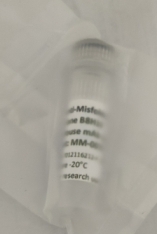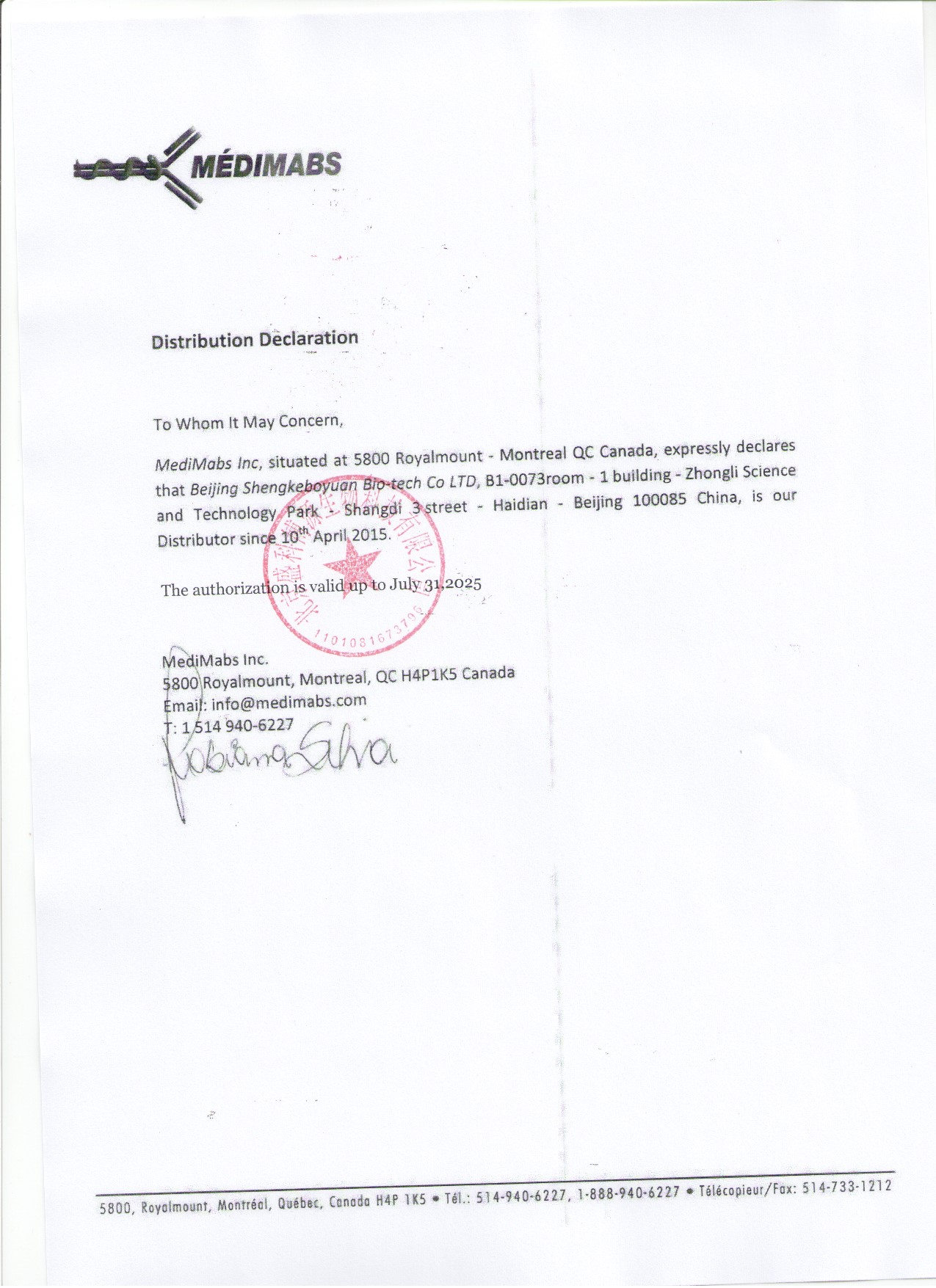 首页>
生物试剂
首页>
生物试剂
商家描述
商家资质信息
产品评价(0)
Target
Amyloid Beta
Target background
Progressive deposition of insoluble aggregates of the 39 to 43 amino acid amyloid β (Aβ) peptide derived from the proteolytic cleavage of the amyloid β-protein precursor (AβPP), gives rise to one of the pathological hallmarks of Alzheimer’s disease (AD). The formation of Aβ fragments is a critical determinant in unleashing AD neuropathology.
Target alias
Beta-amyloid, ABP, amyloid peptide
Immunogen
Full length Amyloid beta
Specificity
A highly specific and sensitive antibody for amyloid beta protein. The antibody recognize the synthetic soluble peptide in ELISA. Both neuritic and diffuse plaques can be detected as well as cerebrovascular amyloid in affected cortex of Alzheimer’s disease (AD) brain by ICC
Clone ID
McSA1
Isotype
IgG1 kappa
Preservative
None
Format
Purified with protein G, stored in PBS pH 7.4 and lyophilized.
Recommend starting dilution
If reconstituted with deionized water in 100 µL: IHC / ICC 1:500. Optimal dilution has to be determined by the user.
Limitations
Research Use Only
Storage
Lyophilized antibodies can be kept at 4ºC for up to 3 months and should be kept at -20ºC for long-term storage (2 years). To avoid freeze-thaw cycles, reconstituted antibodies should be aliquoted before freezing for long-term (1 year) storage (-80ºC) or kept at 4ºC for short-term usage (2 months). For maximum recovery of product, centrifuge the original vial prior to removing the cap. Further dilutions can be made with the assay buffer. After the maximum long-term storage period (2 years lyophilized or 1 year reconstituted) antibodies should be tested in your assay with a standard sample to verify if you have noticed any decrease in their efficacy. To limit antibody loss or degradation, BSA (final concentration 1%) and sodium azide (final concentration 0.02%) can be added to the suggested first dilution. It is important to first verify if those preservatives are compatible with your assay.
 会员登录
会员登录.getTime()%>)
 购物车()
购物车()

 成功收藏产品
成功收藏产品
